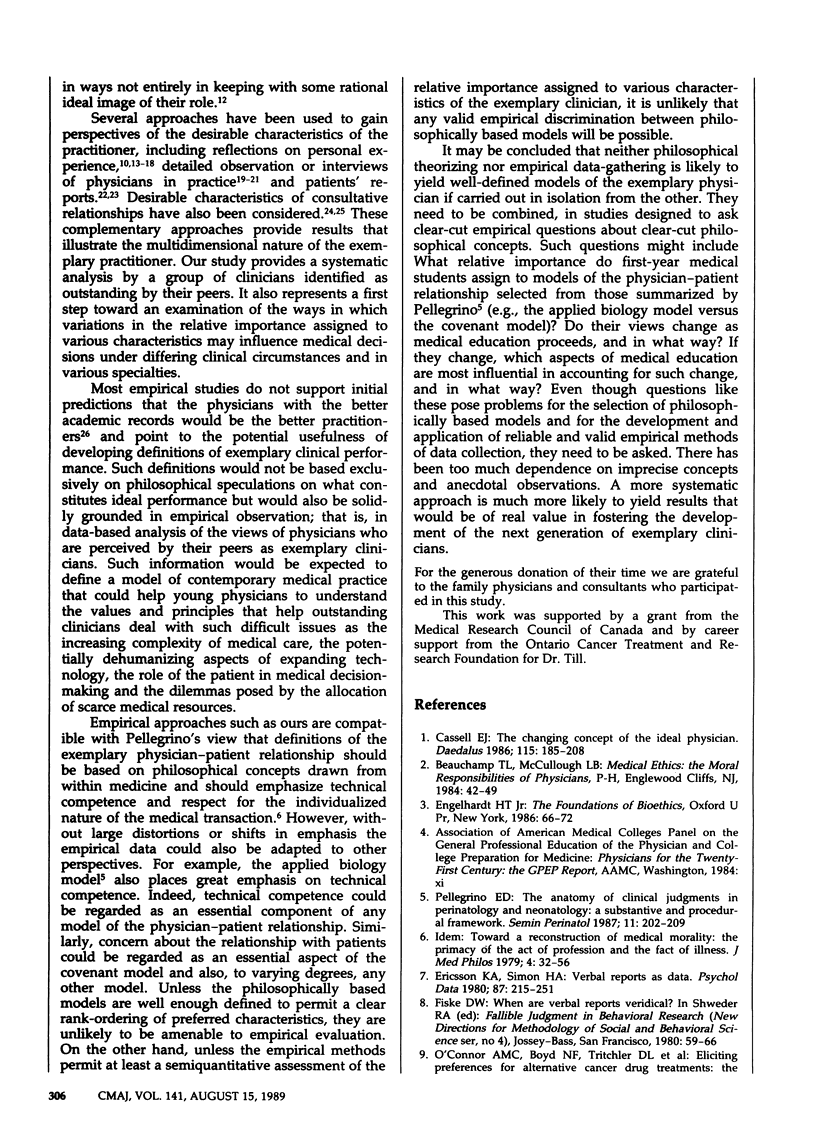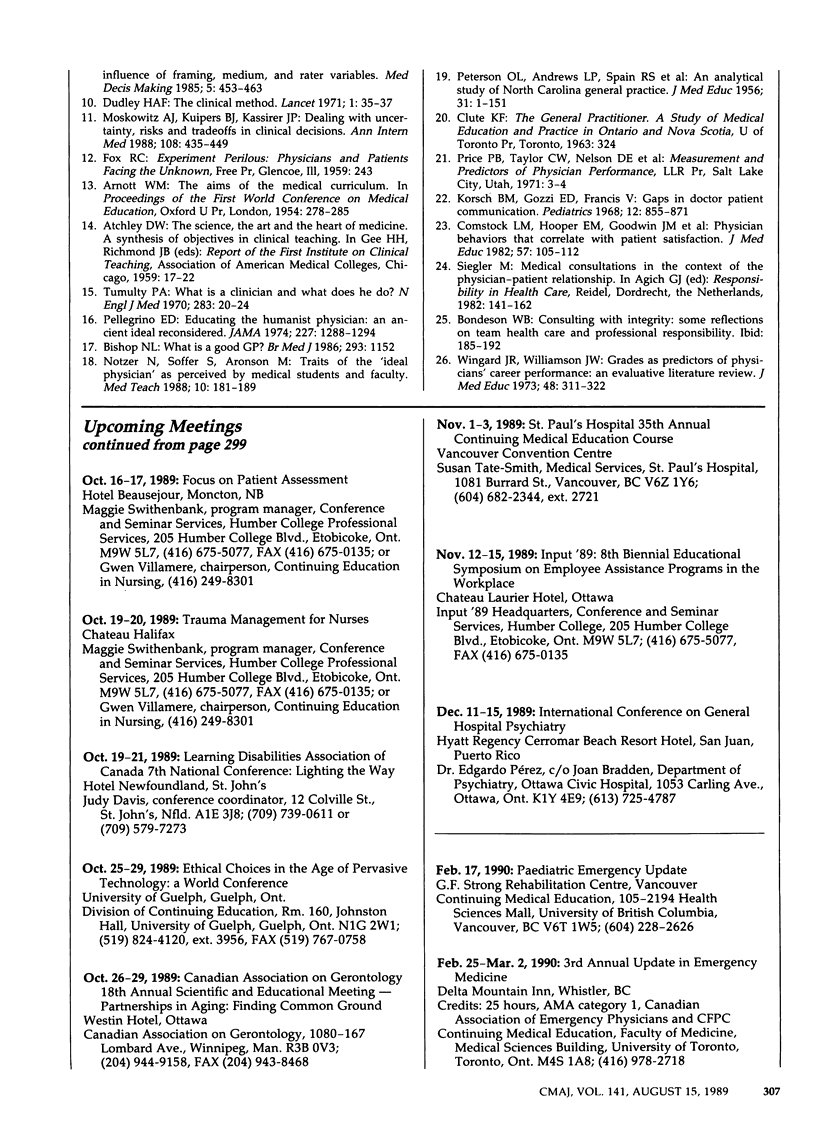Abstract
To identify the characteristics of exemplary family physicians and consultants, we interviewed 25 family physicians and 25 consultants (5 each in the specialties of internal medicine, obstetrics and gynecology, pediatrics, psychiatry and surgery) selected by their peers as being exemplary in their own practice setting. The results indicated that the participants had well-formulated concepts of exemplary practitioners, defining five main categories of performance: clinical competence, relationship with patients, availability, family physician-consultant relationship and a fifth category that included organizational ability and personality attributes. The family physicians and the consultants placed different values on these categories and indicated that these values might change under different clinical circumstances. Their concepts appear to be compatible with, but not restricted to, a model of contemporary medical practice based on an ethic specific to medicine.
Full text
PDF






Selected References
These references are in PubMed. This may not be the complete list of references from this article.
- Bishop N. L. What is a good GP? Br Med J (Clin Res Ed) 1986 Nov 1;293(6555):1152–1152. doi: 10.1136/bmj.293.6555.1152. [DOI] [PMC free article] [PubMed] [Google Scholar]
- Cassell E. J. The changing concept of the ideal physician. Daedalus. 1986 Spring;115(2):185–208. [PubMed] [Google Scholar]
- Comstock L. M., Hooper E. M., Goodwin J. M., Goodwin J. S. Physician behaviors that correlate with patient satisfaction. J Med Educ. 1982 Feb;57(2):105–112. doi: 10.1097/00001888-198202000-00005. [DOI] [PubMed] [Google Scholar]
- Dudley H. A. Clinical method. Lancet. 1971 Jan 2;1(7688):35–37. doi: 10.1016/s0140-6736(71)80028-4. [DOI] [PubMed] [Google Scholar]
- Korsch B. M., Gozzi E. K., Francis V. Gaps in doctor-patient communication. 1. Doctor-patient interaction and patient satisfaction. Pediatrics. 1968 Nov;42(5):855–871. [PubMed] [Google Scholar]
- Moskowitz A. J., Kuipers B. J., Kassirer J. P. Dealing with uncertainty, risks, and tradeoffs in clinical decisions. A cognitive science approach. Ann Intern Med. 1988 Mar;108(3):435–449. doi: 10.7326/0003-4819-108-3-435. [DOI] [PubMed] [Google Scholar]
- Notzer N., Soffer S., Aronson M. Traits of the 'ideal physician' as perceived by medical students and faculty. Med Teach. 1988;10(2):181–189. doi: 10.3109/01421598809010541. [DOI] [PubMed] [Google Scholar]
- Pellegrino E. D. Educating the humanist physician. An ancient ideal reconsidered. JAMA. 1974 Mar 18;227(11):1288–1294. [PubMed] [Google Scholar]
- Pellegrino E. D. The anatomy of clinical-ethical judgments in perinatology and neonatology: a substantive and procedural framework. Semin Perinatol. 1987 Jul;11(3):202–209. [PubMed] [Google Scholar]
- Tumulty P. A. What is a clinician and what does he do? N Engl J Med. 1970 Jul 2;283(1):20–24. doi: 10.1056/NEJM197007022830105. [DOI] [PubMed] [Google Scholar]
- Wingard J. R., Williamson J. W. Grades as predictors of physicians' career performance: an evaluative literature review. J Med Educ. 1973 Apr;48(4):311–322. [PubMed] [Google Scholar]


